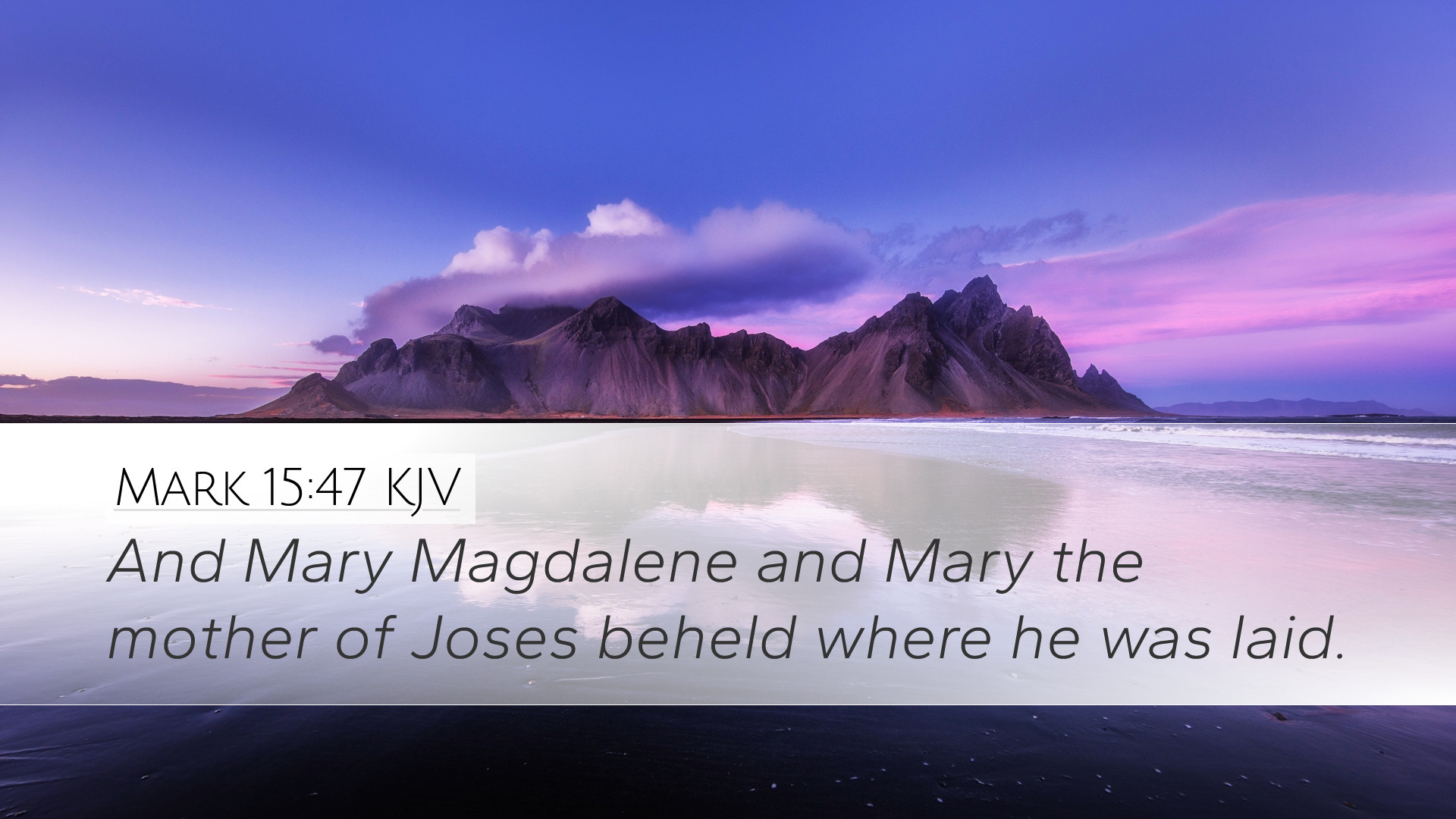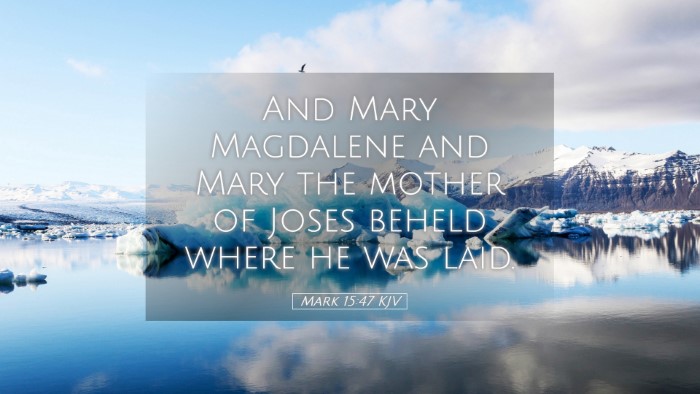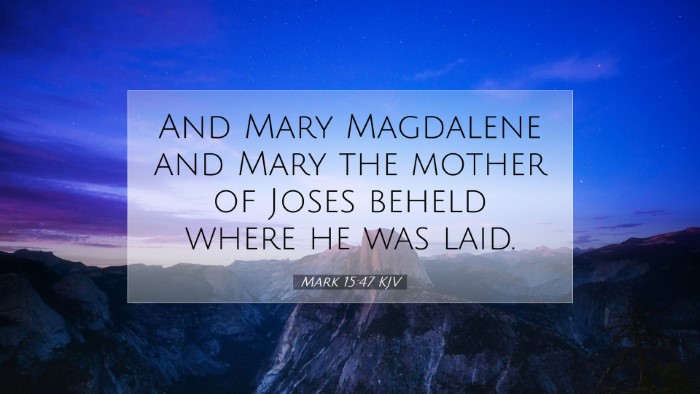Commentary on Mark 15:47
Verse Reference: Mark 15:47 (KJV) - "And Mary Magdalene and Mary the mother of Joses beheld where he was laid."
Introduction
The verse of Mark 15:47 marks a pivotal moment in the Gospel narrative, encapsulating the grief and commitment of the faithful women who stood watchful in the face of Jesus' burial. This commentary seeks to draw on the insights of prominent public domain theologians to provide a comprehensive understanding of the verse's theological, historical, and personal implications.
Contextual Background
In order to fully appreciate the significance of Mark 15:47, it is essential to examine the surrounding events. This verse occurs immediately following the crucifixion of Jesus, a moment filled with sorrow and disbelief among His followers. The mention of these women, particularly Mary Magdalene, highlights their unwavering loyalty amidst the chaos of Jesus' death.
Insights from Commentators
-
Matthew Henry
- Commitment Amidst Grief: Henry emphasizes the deep faith and dedication of Mary Magdalene and Mary the mother of Joses. He notes that their presence at the tomb reflects a devotion that is not merely emotional but is rooted in a profound commitment to Christ. They observed where He was laid, suggesting an intention to return—this foreshadows the resurrection and their role as the first witnesses.
- Lessons in Discipleship: The behavior of these women serves as an example of true discipleship. They did not flee in fear like many of the male disciples but remained to serve Him even in death, illustrating the importance of steadfastness in faith during trials.
-
Albert Barnes
- The Role of Women in the Resurrection Narrative: Barnes discusses the significance of women in the Gospel accounts of Jesus' burial and resurrection. Their presence at the tomb positions them as integral to the early Church's witness of the Resurrection, further demonstrating God's grace in using those marginalized by society.
- Observing the Tomb: Barnes details the act of observing where Jesus lay as a poignant reminder of their sorrow and hope. The act of watching signifies not just grief but a lingering expectation for what may come, embodying both loss and the anticipation of resurrection.
-
Adam Clarke
- Historical Context: Clarke provides a historical lens on the burial practices of the time, noting how Joseph of Arimathea’s actions and the implications of the tomb being sealed were crucial. He sheds light on the cultural context, enhancing our understanding of why these women would take note of the exact location of Christ’s burial.
- Mary Magdalene’s Significance: Clarke highlights Mary Magdalene's prominence in the Gospel stories, emphasizing her transformation from a life of despair to one of hope in Christ. Her unwavering attendance at the burial site signals the transformative power of Christ’s ministry.
Theological Reflections
Mark 15:47 extends beyond a mere historical account; it presents profound theological truths. The observance of the tomb by these women offers insights into themes of hope, loss, and resurrection. Their actions exemplify a theological principle that faith often perseveres amidst apparent finality.
- The Nature of Hope: The women’s presence reflects a hope that transcends despair, a recurring theme in Scripture. Their mourning was not without expectation; they were waiting for the fulfillment of His promises.
- Witness and Testimony: The women's role also symbolizes the inclusivity of God's Kingdom, where testimony is not restricted by gender, social status, or honor. The choosing of women as the first witnesses of the resurrection speaks to God's purpose in subverting societal norms.
Personal Application
For pastors and scholars, Mark 15:47 offers rich material for application in preaching and teaching. The commitment of these women invites a personal reflection on faithfulness in our own lives. Are we watching and waiting with hope, even in our darkest moments? The actions of Mary Magdalene and her companion call us to consider the ways in which we bear witness to Christ's love and power in our contexts today.
Conclusion
Mark 15:47 encapsulates a moment of grief transformed by the promise of resurrection. Drawing insights from esteemed commentators, we glean vital lessons about faithfulness, hope, and the transformative nature of Christ’s ministry. As we reflect on this verse, let us embrace the call to stand in faith, witnessing to the resurrection that changes everything.


